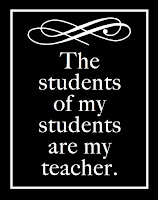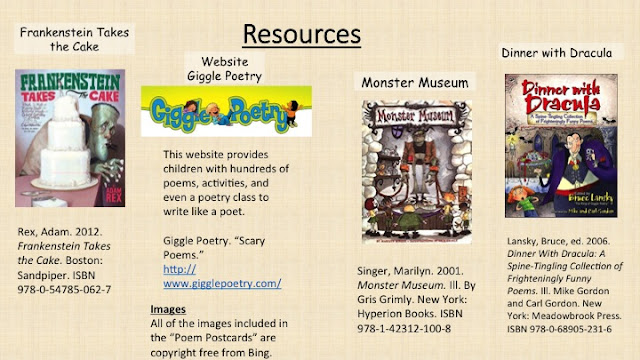Janet (Wong) and I are in Los Angeles for the National Science Teachers Association (NSTA) conference all set to share POETRY with this gigantic group of science teachers. This is our third or fourth time to join an NSTA conference and we’re always so pleased about how open they are to infusing poetry into the science curriculum. After our first NSTA conference, the editor of SCIENCE AND CHILDREN invited us to submit an article which resulted in this article HERE. We really tried to make the case for how many wonderful works of poetry lent themselves to the teaching of science.
The next conference led to a spot on the Science Friday radio program. So cool! Poetry Friday meets Science Friday! Then we scored a monthly “Poetry of Science” column in SCIENCE AND CHILDREN. Here's just one recent example:
![]()
I share this not to brag, but to highlight how science folks are actively seeking ways to connect science content and promote literacy too. So cool! (I find it harder to convince reading and language arts teachers to share science-focused poetry than it is to get science teachers to consider sharing poetry! What?)

I share this not to brag, but to highlight how science folks are actively seeking ways to connect science content and promote literacy too. So cool! (I find it harder to convince reading and language arts teachers to share science-focused poetry than it is to get science teachers to consider sharing poetry! What?)
Here are a few highlights of our upcoming presentation at NSTA. We’re particularly connecting with the very popular Picture-Perfect series by Emily Morgan and Karen Ansberrythat suggests using picture books as anchors for science lessons—and we’re adding poetry to that mix! Science-focused picture books + science-focused poetry!
Here's on example from ONE of the first three books in the series, More Picture-Perfect Science Lessons:
The pair of science-focused picture books that Ansberry and Morgan selected for this topic are:
What poetry book might you connect with this topic and with these particular picture books?
And what poem from The Poetry Friday Anthology for Science might extend this lesson even further?
STEM topics in these two books include:

Poetry to match with some of those science topics might include:

Finally, my Book Links article for April suggests poetry to match with their selections of science picture books in each of the Picture-Perfect resource books. You’ll find that HERE.

That's just a sampling of what we shared. The main point is: if you're using picture books with a science focus for a science lesson, why not include a science poem (or poetry book) to extend the lesson even further? Start or end the lesson with a poem. Or offer another way of viewing a science topic through the eyes of a poet!
Now go see what Amy Ludwig VanDerwater has in store for us this Poetry Friday over at the Poem Farm.


























































































